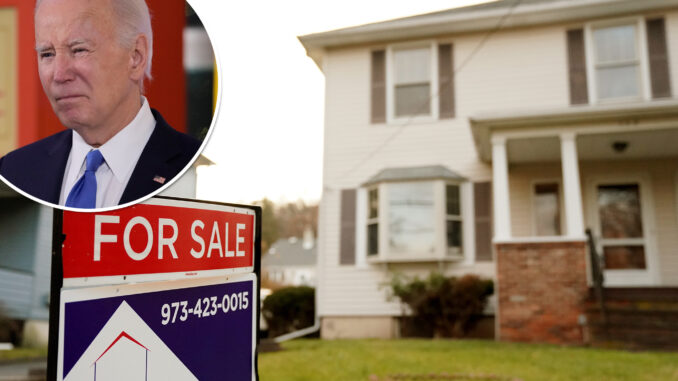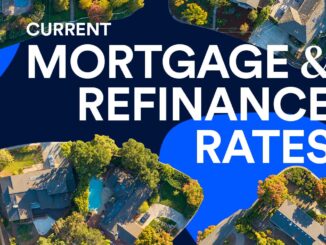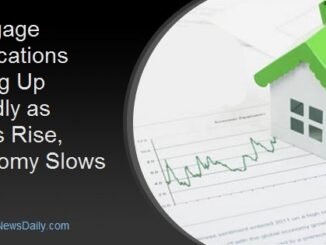
The dream of owning a home in America is slipping farther away for many, with average monthly mortgage payments now nearly double what they were at the start of the Biden administration.
As interest rates surge above 7% and housing prices continue their ascent, aspiring buyers are confronted with one of the most unaffordable markets in recent memory.
Recent analysis indicates that opting to rent might make more financial sense, with average new leases ringing in at $1,000 less per month than the cost of home loans.
The landscape is bleak, prompting experts to advise potential buyers against waiting for a market shift and instead bracing for an extended period of higher interest rates.
Data from real estate investment firm CBRE illustrates a stark reality: average monthly payments on a new home soared to $3,322 in the third quarter of this year, marking a staggering 90% increase since late 2020 when it hovered at just $1,746 before Biden took office.
This analysis, centered on a $430,000 home with a 30-year mortgage, considering a 10% down payment, underscores the gravity of the situation.
It’s important to note this calculation doesn’t incorporate a slight recent dip in home loan rates.
The surge in mortgages finds its roots in the Federal Reserve’s assertive drive to elevate interest rates from near-zero in April 2020 to a 22-year high, reaching between 5.25% and 5.5%.
This aggressive strategy aimed to curb red-hot inflation, hoping to temper consumer spending and rein in prices.
Hannah Jones, Senior Economic Research Analyst at Realtor.com, says she expects interest rates to come down by next year, which could take $200 to $400 off monthly mortgage payments.
“Our housing forecast expects mortgage rates to be on average 6.8% in 2024 and to come down to 6.5% by the end of next year,” Jones told The Post.
But she reiterates the difficult time it is for first-time buyers.
“It is definitely a very, very challenging market to be a first-time homebuyer,” Jones added. “First-time home buyers don’t inherently have a home sale to leverage into a home purchase and so it does make it very challenging to save for a down payment. Especially a down payment large enough to purchase a home at today’s prices.”
However, despite inflation hovering around an annual rate of 3.2%, the Fed’s efforts have stabilized rates in recent meetings since July.
Consequently, mortgages have shown signs of easing, with the latest data from Freddie Mac showing a decline to 7.03%, the lowest level recorded since early August.
“The rental market is still an okay place to wait things out if it is just not in the cards right now,” Jones added. “The worst thing you can do is to get yourself in a situation where you purchased a home you cannot afford or it is not comfortable.”
There also is the alternative of finding other places to live.
“For first-time home buyers there are a lot of creative solutions that we are seeing, such as moving to areas that are maybe a little bit further out or moving to areas that are a little bit lower priced,” Jones added. “We have seen the popularity of the Midwest and lower-priced Northeast markets really surge over the last year as home prices have gotten really high.”
Meanwhile, a Bank of America executive warned homebuyers not to keep waiting to see how low rates can go.
“Timing the market is never good,” Matt Vernon, head of consumer lending, told Insider.
“It’s really when you’re financially steady, emotionally ready and, ultimately, you find that home that fits your dreams and/or your needs.”
Real Estate – Latest NYC, US & Celebrity News



